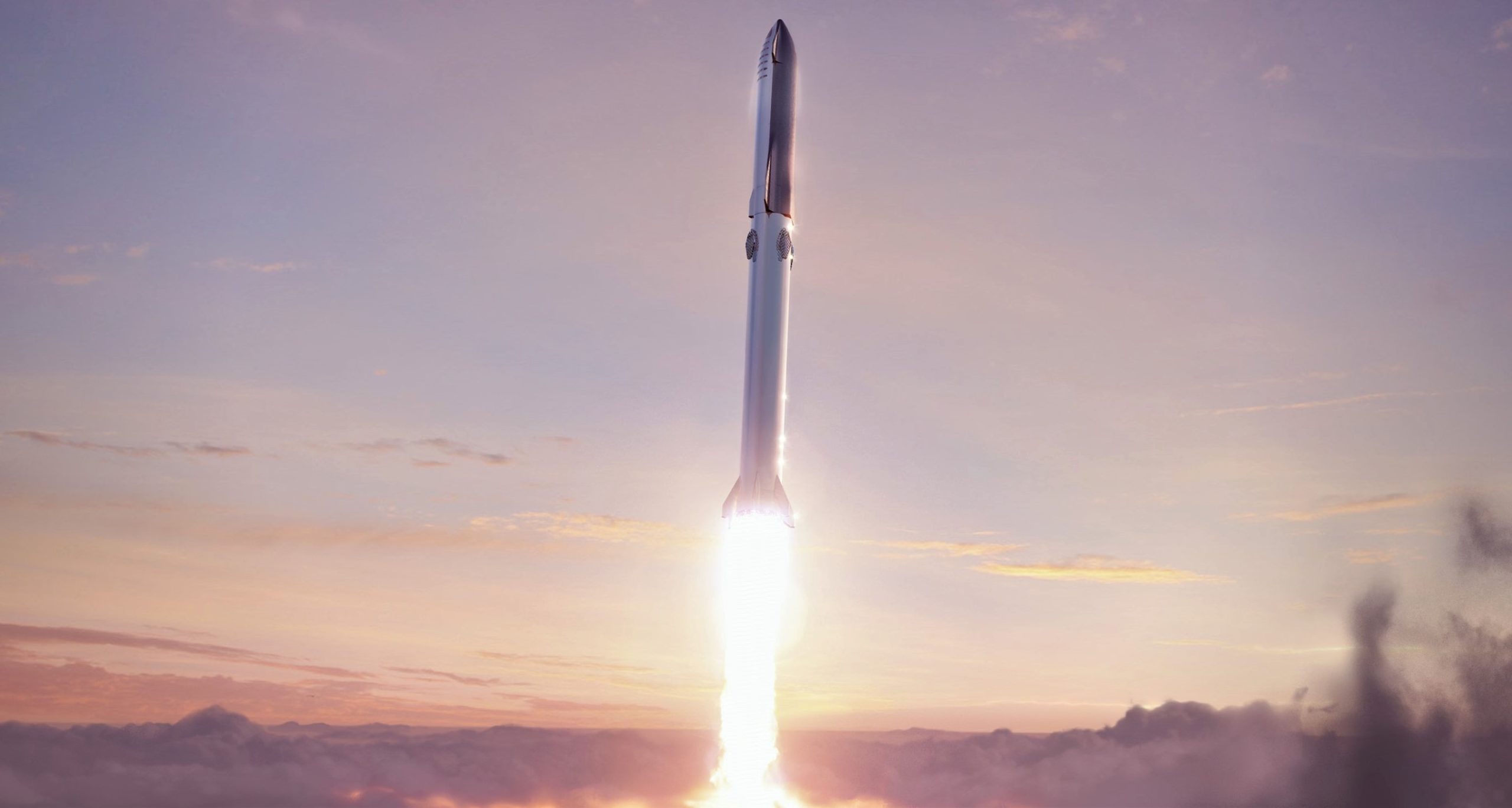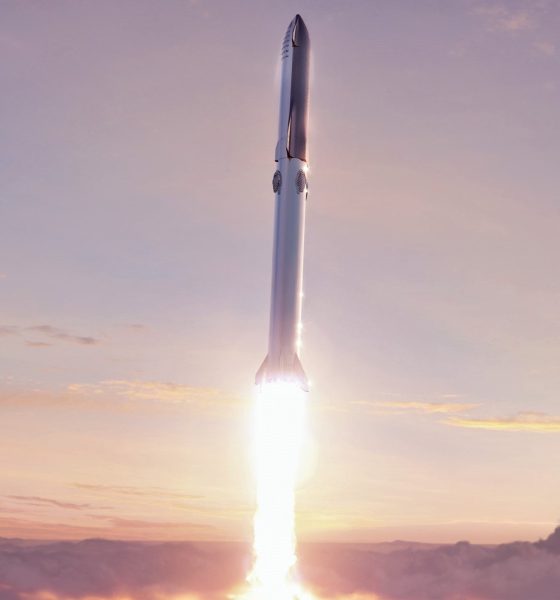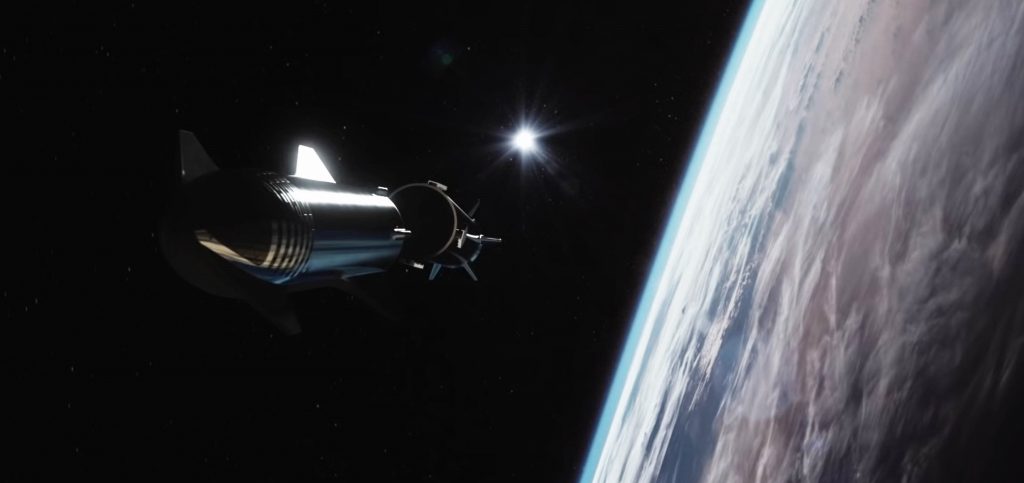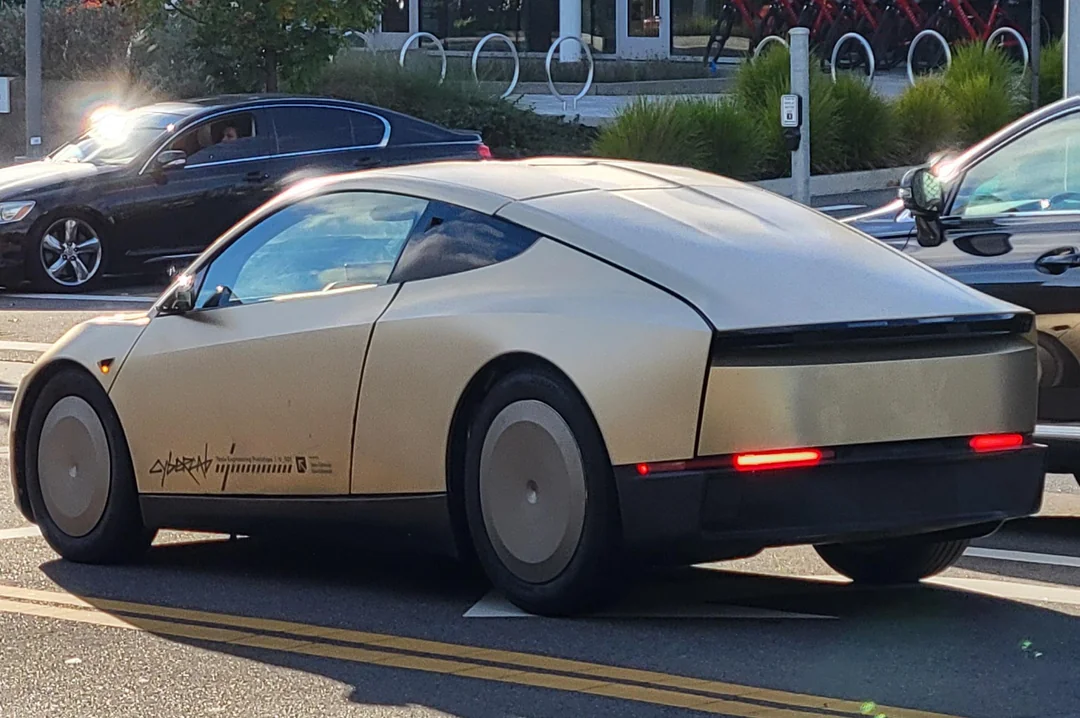

News
SpaceX CEO Elon Musk confirms Q3 2021 target for first orbital Starship launch
Update: On the heels of a NASASpaceflight report, CEO Elon Musk has confirmed that SpaceX has an internal target of Q3 2021 (possibly as early as July!) for Starship’s first orbital launch attempt.
NASASpaceflight reports that SpaceX wants to begin orbital Starship launch attempts as early as July 1st, 2021, less than four months from now.
In no uncertain terms, this is an internal target, meaning that it’s far likelier than not that SpaceX’s first orbital Starship launch attempt wont happen in July. Nevertheless, the target’s existence implies that SpaceX sees a real, viable path – however narrow – to launching Starship into orbit for the first time just four months from now.
Put a different way, SpaceX believes it has six months of margin to get through preliminary Super Heavy booster testing (possibly including one or several hops), qualify an upgraded Starship design (SN15 onwards), roughly complete an orbital launch complex, and deliver around two-dozen orbit-capable Raptor engines before the end of the year. While unclear, it’s also possible that the milestone would require SpaceX to qualify and ship the first flightworthy Raptor Vacuum engines – another major challenge.
On its own, completing any one of those major feats of engineering would be impressive. Completing all of them simultaneously – even if the effort suffers more than five months of delays – would be nothing short of extraordinary. As such, it’s fair to assume that SpaceX will fall well short of its incredibly ambitious development schedule, even if the company almost invariably does what it sets out to do.
In this case, that means that there is a very real chance that Starship reaches orbit before the end of 2021, achieving a target that both SpaceX CEO Elon Musk and COO/President Gwynne Shotwell have reiterated within the last several months.

Even after reaching orbit for the first time, SpaceX will likely continue Starship development largely unchanged, treating the orbital regime as just another sandbox to test and refine Starship prototypes with. Given all the extraordinary problems SpaceX will need to solve to reach orbit, there’s also a decent chance that Starship or Super Heavy’s first orbital launch attempt will fail. If the launch is initially successfully, it’s just as likely that Super Heavy will fail its first hypersonic launch and landing attempt.
If Starship itself reaches orbit in one piece, any number of issues could kill the vehicle in space. If it survives long enough complete a 90-minute orbit and line up for reentry, descent, and landing, Starship’s first orbital-velocity atmospheric reentry – one of the biggest challenges in aerospace engineering – could easily destroy the spacecraft. If Starship somehow makes it through reentry on its first try, the stresses of orbital spaceflight and that reentry could prevent its Raptor engines from performing nominally during its powered flip maneuver and landing burn.
This is all to say that even as SpaceX sets its sights on orbital flight, the trajectory is still a continuation of an ongoing test program and iterative development process. While orbit-capable Starships will likely be much more expensive than their suborbital brethren, the differences are small enough that SpaceX will undoubtedly continue to push the envelope and risk losing prototypes to uncover and fix bugs and design flaws as early as possible.
Along the way, there will undoubtedly be more SN8/SN9/SN10-style hiccups. Given Starship’s developmental history, however, it’s starting to look like nothing less than catastrophe will prevent SpaceX from launching Starship into orbit before the year is out.

News
Tesla Model 3 named New Zealand’s best passenger car of 2025
Tesla flipped the switch on Full Self-Driving (Supervised) in September, turning every Model 3 and Model Y into New Zealand’s most advanced production car overnight.

The refreshed Tesla Model 3 has won the DRIVEN Car Guide AA Insurance NZ Car of the Year 2025 award in the Passenger Car category, beating all traditional and electric rivals.
Judges praised the all-electric sedan’s driving dynamics, value-packed EV tech, and the game-changing addition of Full Self-Driving (Supervised) that went live in New Zealand this September.
Why the Model 3 clinched the crown
DRIVEN admitted they were late to the “Highland” party because the updated sedan arrived in New Zealand as a 2024 model, just before the new Model Y stole the headlines. Yet two things forced a re-evaluation this year.
First, experiencing the new Model Y reminded testers how many big upgrades originated in the Model 3, such as the smoother ride, quieter cabin, ventilated seats, rear touchscreen, and stalk-less minimalist interior. Second, and far more importantly, Tesla flipped the switch on Full Self-Driving (Supervised) in September, turning every Model 3 and Model Y into New Zealand’s most advanced production car overnight.
FSD changes everything for Kiwi buyers
The publication called the entry-level rear-wheel-drive version “good to drive and represents a lot of EV technology for the money,” but highlighted that FSD elevates it into another league. “Make no mistake, despite the ‘Supervised’ bit in the name that requires you to remain ready to take control, it’s autonomous and very capable in some surprisingly tricky scenarios,” the review stated.
At NZ$11,400, FSD is far from cheap, but Tesla also offers FSD (Supervised) on a $159 monthly subscription, making the tech accessible without the full upfront investment. That’s a game-changer, as it allows users to access the company’s most advanced system without forking over a huge amount of money.
News
Tesla starts rolling out FSD V14.2.1 to AI4 vehicles including Cybertruck
FSD V14.2.1 was released just about a week after the initial FSD V14.2 update was rolled out.

It appears that the Tesla AI team burned the midnight oil, allowing them to release FSD V14.2.1 on Thanksgiving. The update has been reported by Tesla owners with AI4 vehicles, as well as Cybertruck owners.
For the Tesla AI team, at least, it appears that work really does not stop.
FSD V14.2.1
Initial posts about FSD V14.2.1 were shared by Tesla owners on social media platform X. As per the Tesla owners, V14.2.1 appears to be a point update that’s designed to polish the features and capacities that have been available in FSD V14. A look at the release notes for FSD V14.2.1, however, shows that an extra line has been added.
“Camera visibility can lead to increased attention monitoring sensitivity.”
Whether this could lead to more drivers being alerted to pay attention to the roads more remains to be seen. This would likely become evident as soon as the first batch of videos from Tesla owners who received V14.21 start sharing their first drive impressions of the update. Despite the update being released on Thanksgiving, it would not be surprising if first impressions videos of FSD V14.2.1 are shared today, just the same.
Rapid FSD releases
What is rather interesting and impressive is the fact that FSD V14.2.1 was released just about a week after the initial FSD V14.2 update was rolled out. This bodes well for Tesla’s FSD users, especially since CEO Elon Musk has stated in the past that the V14.2 series will be for “widespread use.”
FSD V14 has so far received numerous positive reviews from Tesla owners, with numerous drivers noting that the system now drives better than most human drivers because it is cautious, confident, and considerate at the same time. The only question now, really, is if the V14.2 series does make it to the company’s wide FSD fleet, which is still populated by numerous HW3 vehicles.
News
Waymo rider data hints that Tesla’s Cybercab strategy might be the smartest, after all
These observations all but validate Tesla’s controversial two-seat Cybercab strategy, which has caught a lot of criticism since it was unveiled last year.

Toyota Connected Europe designer Karim Dia Toubajie has highlighted a particular trend that became evident in Waymo’s Q3 2025 occupancy stats. As it turned out, 90% of the trips taken by the driverless taxis carried two or fewer passengers.
These observations all but validate Tesla’s controversial two-seat Cybercab strategy, which has caught a lot of criticism since it was unveiled last year.
Toyota designer observes a trend
Karim Dia Toubajie, Lead Product Designer (Sustainable Mobility) at Toyota Connected Europe, analyzed Waymo’s latest California Public Utilities Commission filings and posted the results on LinkedIn this week.
“90% of robotaxi trips have 2 or less passengers, so why are we using 5-seater vehicles?” Toubajie asked. He continued: “90% of trips have 2 or less people, 75% of trips have 1 or less people.” He accompanied his comments with a graphic showing Waymo’s occupancy rates, which showed 71% of trips having one passenger, 15% of trips having two passengers, 6% of trips having three passengers, 5% of trips having zero passengers, and only 3% of trips having four passengers.
The data excludes operational trips like depot runs or charging, though Toubajie pointed out that most of the time, Waymo’s massive self-driving taxis are really just transporting 1 or 2 people, at times even no passengers at all. “This means that most of the time, the vehicle being used significantly outweighs the needs of the trip,” the Toyota designer wrote in his post.
Cybercab suddenly looks perfectly sized
Toubajie gave a nod to Tesla’s approach. “The Tesla Cybercab announced in 2024, is a 2-seater robotaxi with a 50kWh battery but I still believe this is on the larger side of what’s required for most trips,” he wrote.
With Waymo’s own numbers now proving 90% of demand fits two seats or fewer, the wheel-less, lidar-free Cybercab now looks like the smartest play in the room. The Cybercab is designed to be easy to produce, with CEO Elon Musk commenting that its product line would resemble a consumer electronics factory more than an automotive plant. This means that the Cybercab could saturate the roads quickly once it is deployed.
While the Cybercab will likely take the lion’s share of Tesla’s ride-hailing passengers, the Model 3 sedan and Model Y crossover would be perfect for the remaining 9% of riders who require larger vehicles. This should be easy to implement for Tesla, as the Model Y and Model 3 are both mass-market vehicles.









